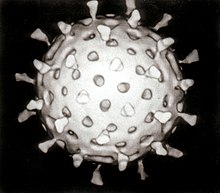WikiJournal of Medicine/Best articles of 2017
WikiJournal of Medicine
Open access • Publication charge free • Public peer review • Wikipedia-integrated

www.WikiJMed.org
ISSN: 2002-4436
Frequency: Continuous
Since: March 2014
Funding: Wikimedia Foundation
Publisher: WikiJournal User Group
On social media
![]() RSS feed
RSS feed
![]() Facebook
Facebook
![]() Twitter
Twitter
![]() YouTube
YouTube
![]() Mailing list
Mailing list
 |
 |
2020:
Article in The Signpost
2019:
Presentation at Wikimania 2019
Presentation at American Psychological Association
Article in The Signpost
Article in the Wikimedia UK blog
2018:
Presentation at APO forum
Interview with Wikimedia Foundation
Winners of the best articles submitted in 2017
Gained COPE membership
Presentation at Wikimania 2018

All articles submitted to WikiJournal of Medicine in 2017 and published before March 1, 2018 were eligible for prizes, regardless of the article format. Articles have been assessed by a panel of external judges based on the article's scientific content, readability and value to the general public (Note: articles published by Wiki. J. Med. editorial board members were ineligible).
Jury members
Mio Sam Lao, PhD holds a bachelor of science from Hong Kong Baptist University and doctorate in biochemistry from University of St. Andrews, U.K. She has worked in a biotechnology company in the Greater New York City area.
Dr. Anjna Harrar, MBBS, BSc(Hons), MRCGP, DRCOG, DFSRH, PGDipDerm, DHMSA, is a general practitioner in the U.K. She graduated from St. George's Hospital Medical School, London and holds additional degrees in dermatology and history of medicine. She is president-elect of the History of Medicine Society at the Royal Society of Medicine, London.
Tim Vickers, PhD holds a doctorate in biochemistry from University of Dundee, Scotland and currently works at the Department of Medicine, Division of Infectious Diseases, Washington University School of Medicine, Saint Louis, Missouri in the U.S. He is also director of the WikiProject Molecular and Cellular Biology on the English Wikipedia.
Prize winners
All prizes are listed in U.S. dollars.
First prize ($ 200)

First prize is awarded to Graham Beards for an article: Rotavirus.
Comments from the jury members:
| “ | Exceptionally well structured on an important topic as highlighted by its incidence worldwide and WHO’s attention to it. ... The abstract was outstanding in clarity. | ” |
| “ | An article about rotavirus written in a classic textbook style. Well organized, readable and structured with good flow. Ample references for readers (and graduate students) to explore more... | ” |
Second prize ($ 100)

Second prize goes to Kholhring Lalchhandama for the article on Plasmodium falciparum erythrocyte membrane protein 1.
Comments from the judges:
| “ | One of the shorter papers, but very clear of the importance if this protein and I thoroughly enjoyed reading this. | ” |
| “ | This is a very well-written, highly readable article even for lay person (with some scientific knowledge). Excellent use of illustrations, it clearly laid out the structure and pathogenesis of the malaria parasite at the RBC stage. | ” |
Third prize ($ 50)

Third prize goes to the Hippocampus article by Marion Wright et al.
| “ | A comprehensive review covering a vast area around the topic. Historical relevance excellently dealt with and a wide range of sources used. Quite complex in many places and I imagine a narrower audience relative to other articles. Nevertheless, with dementia a key hot topic at moment, it may be of greater appeal than expected. | ” |
| “ | Such a complicated organ, brain (and hippocampus) are not easy to describe and make it readable, especially to lay person like myself. However, the authors did a fine job in presenting the various aspects of hippocampus, even though there are many unknowns in its function. | ” |



